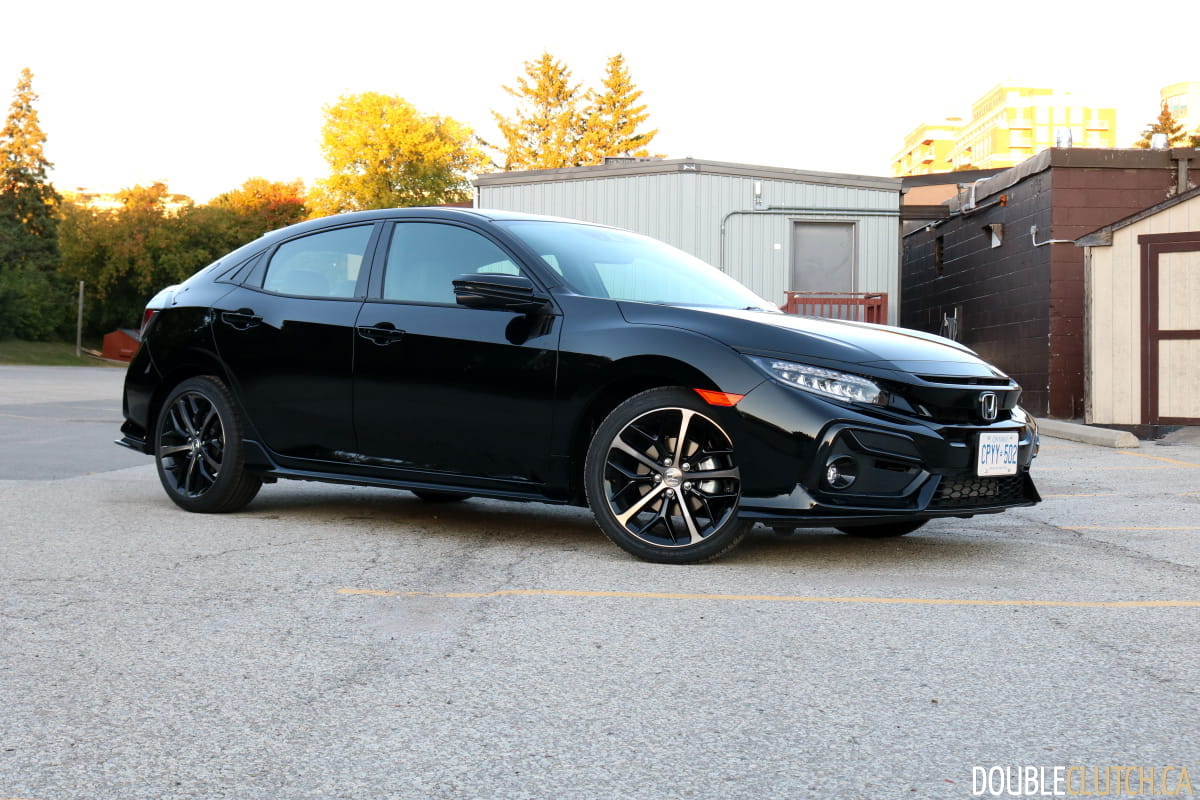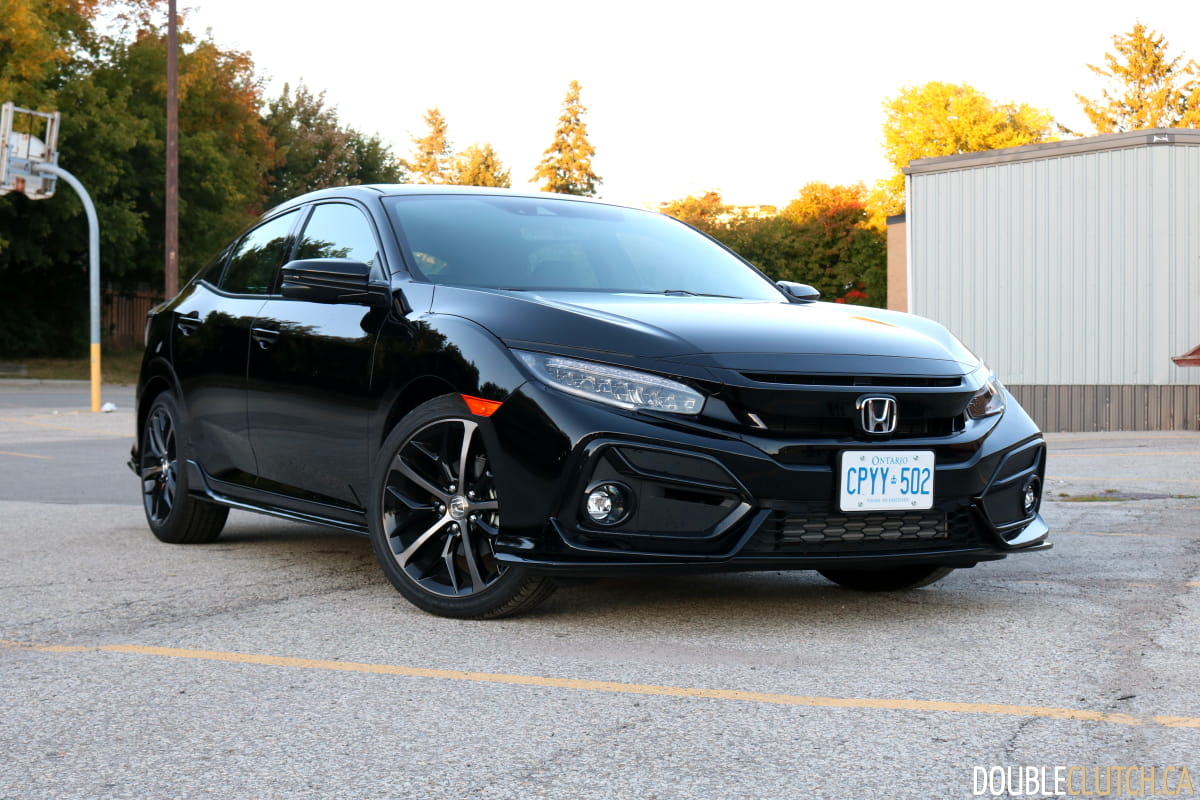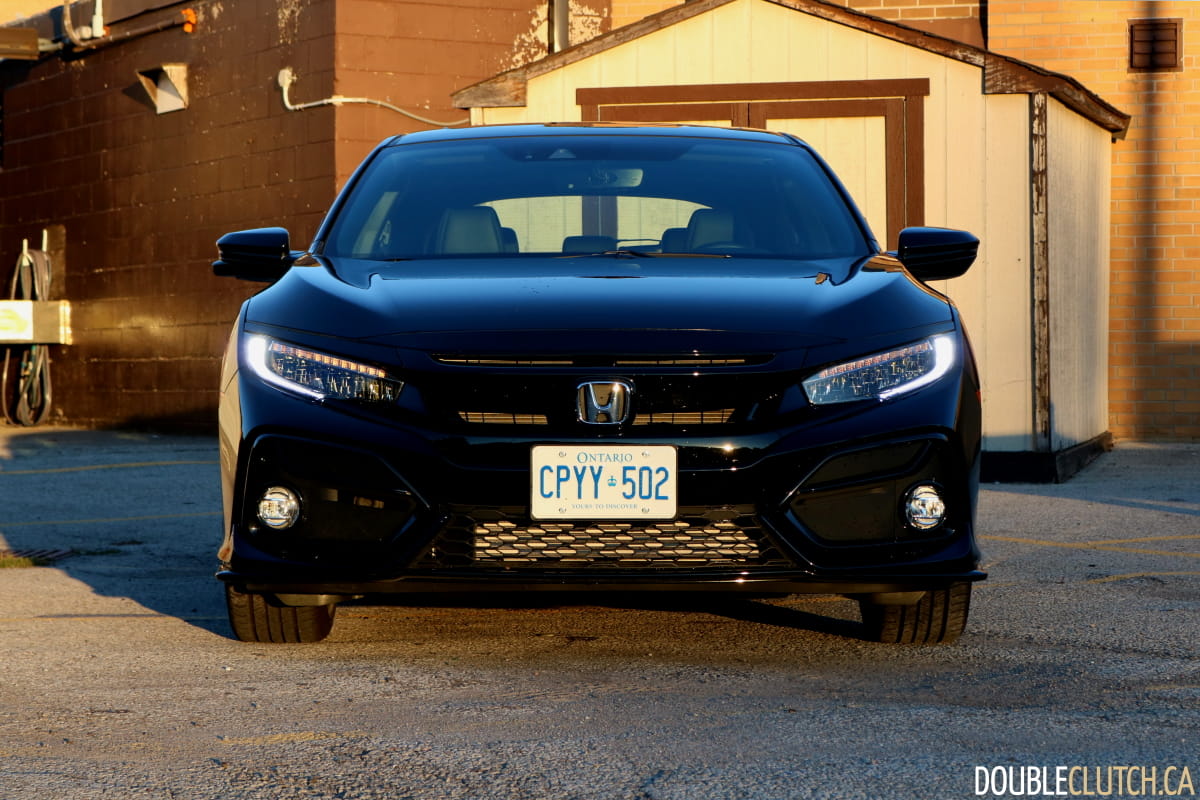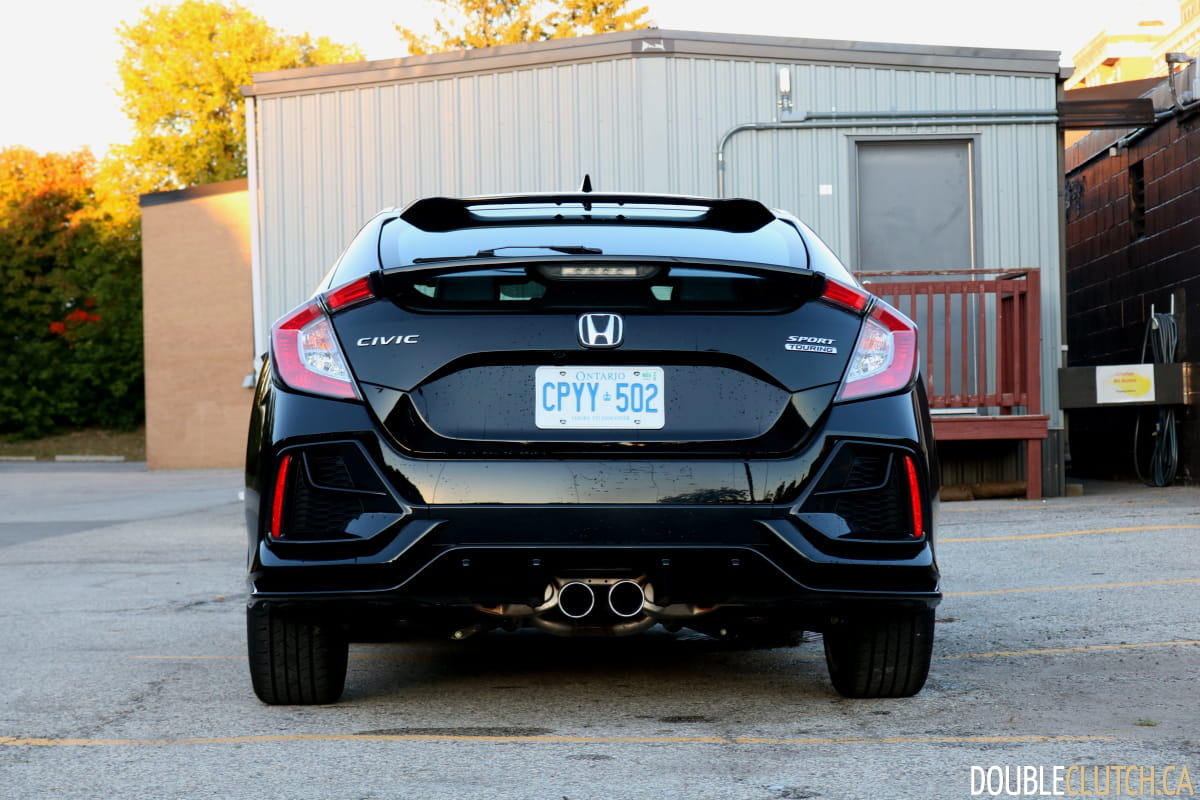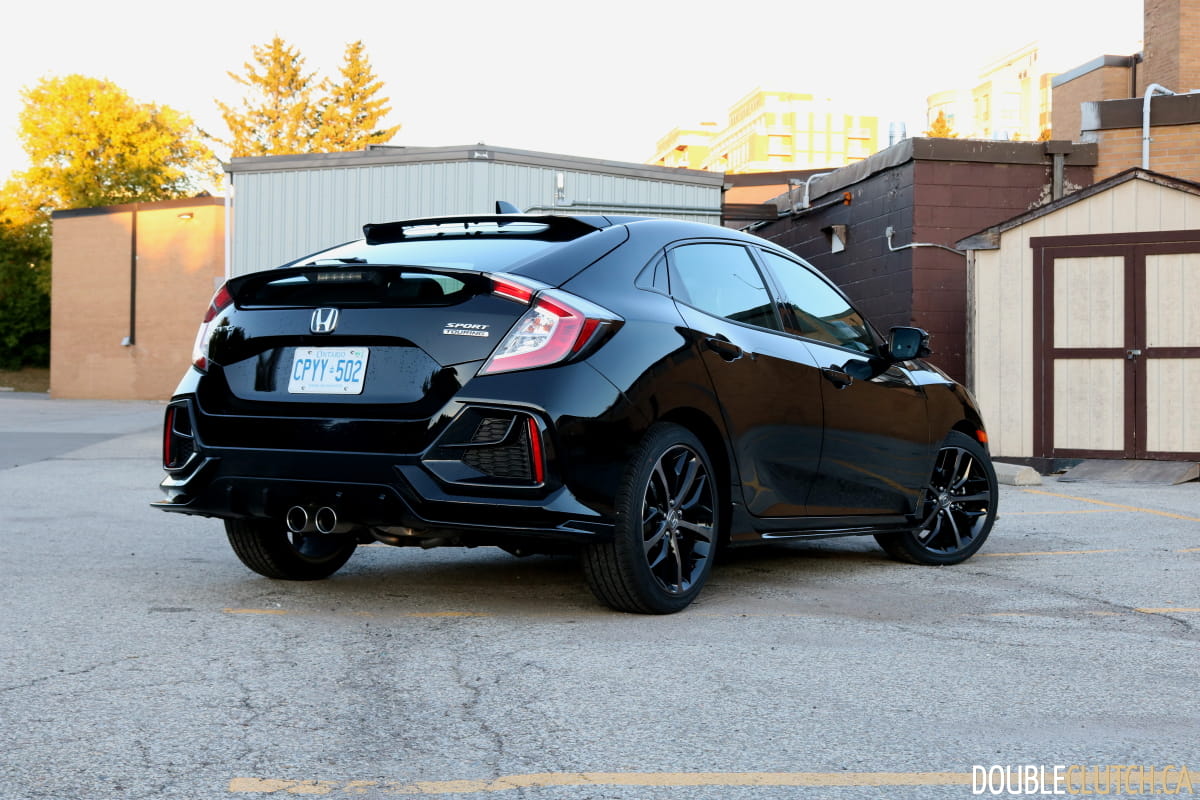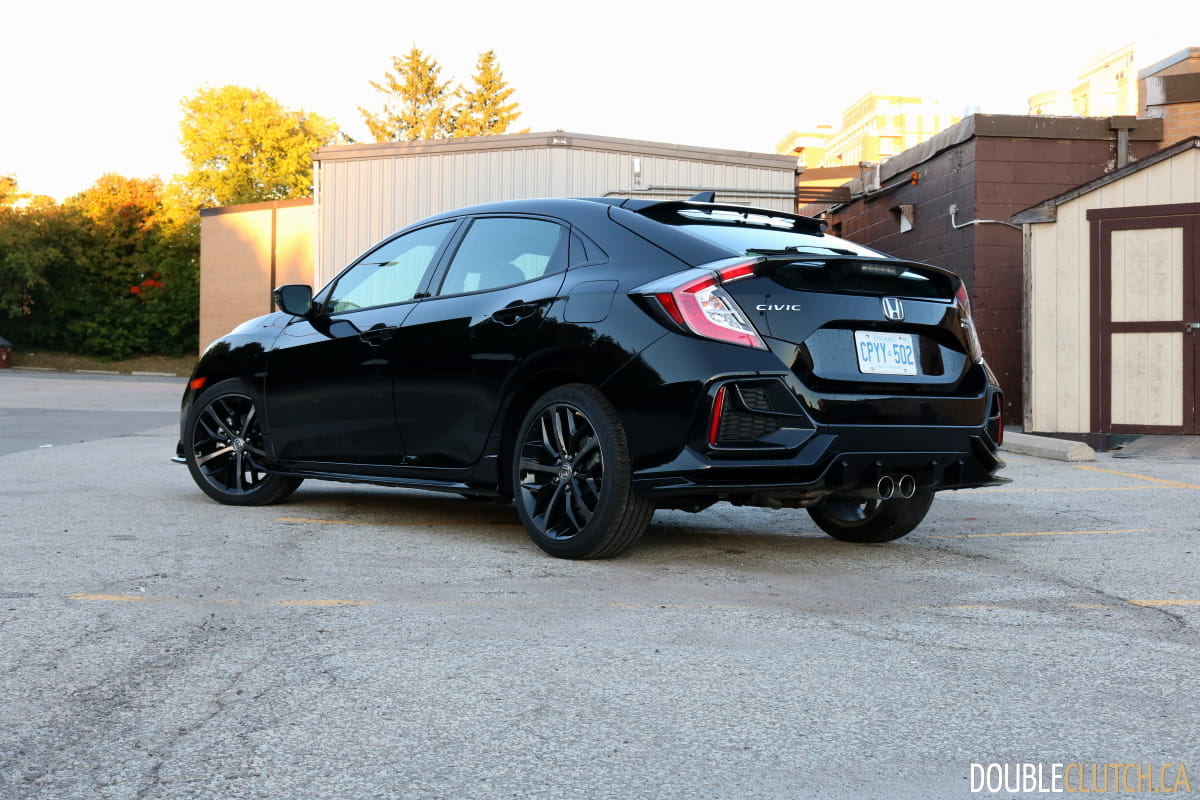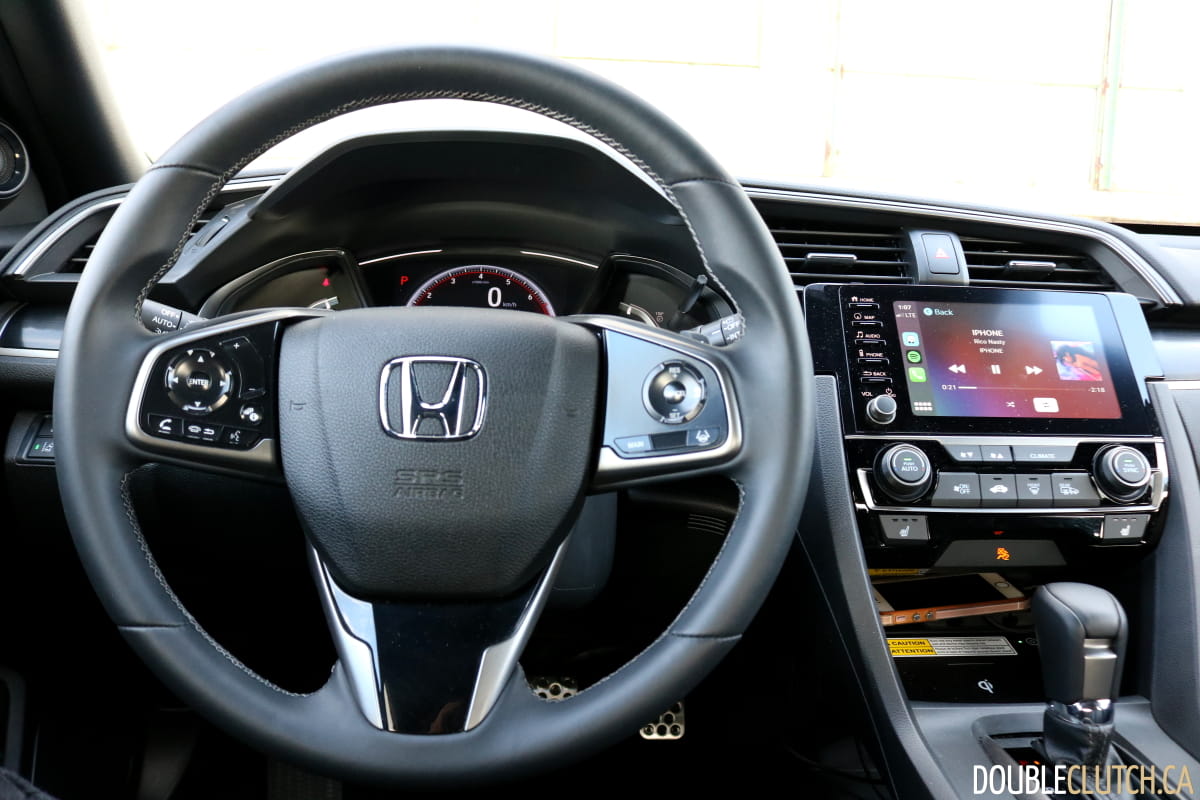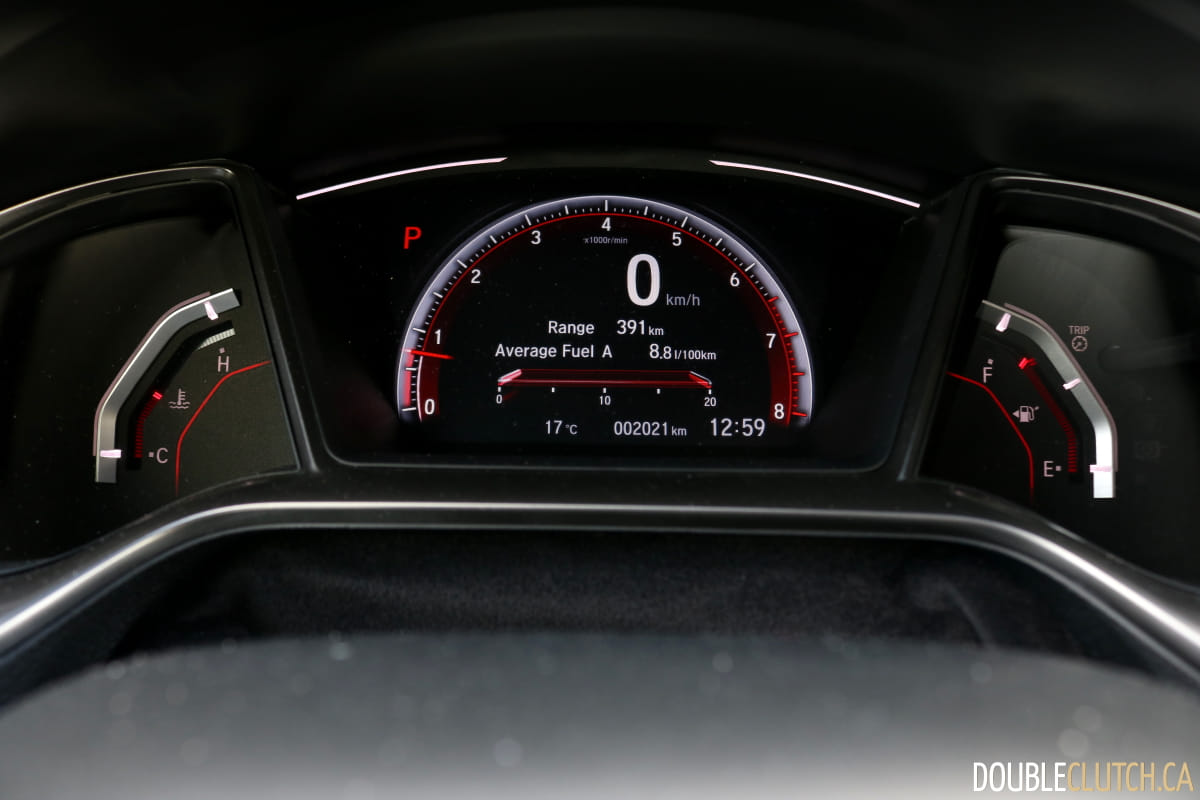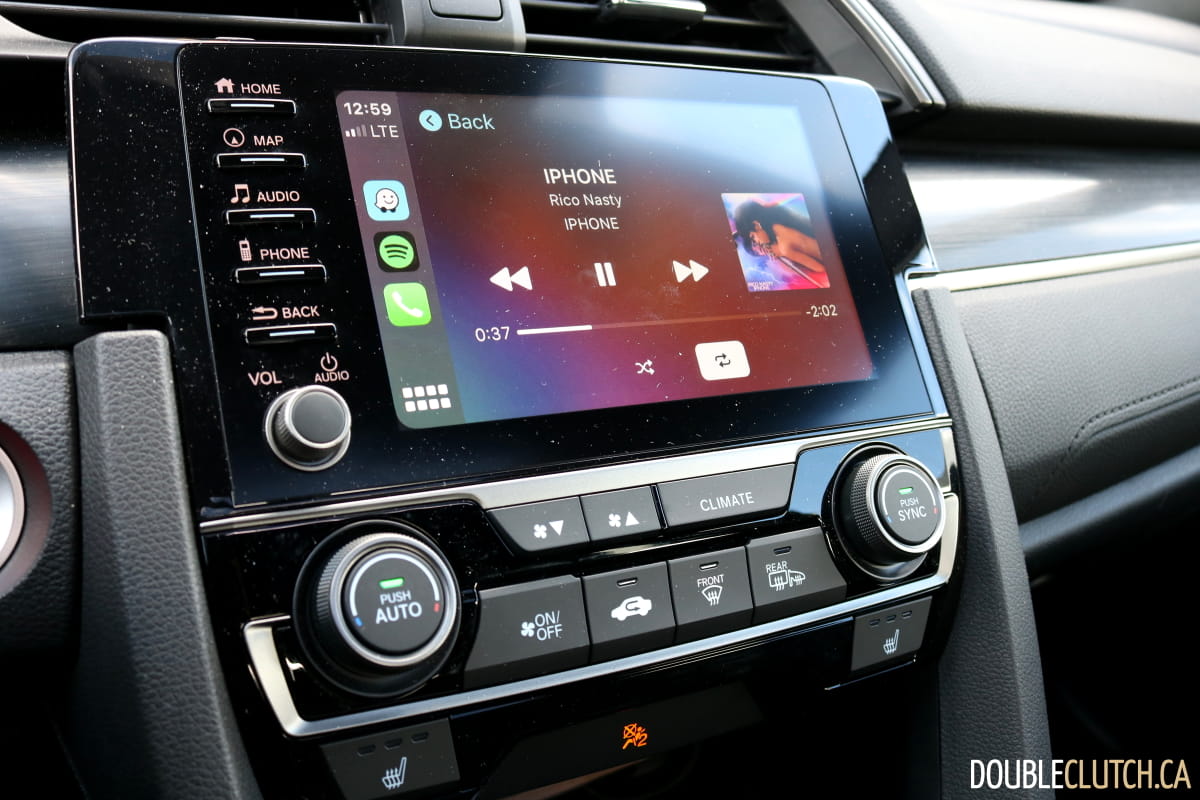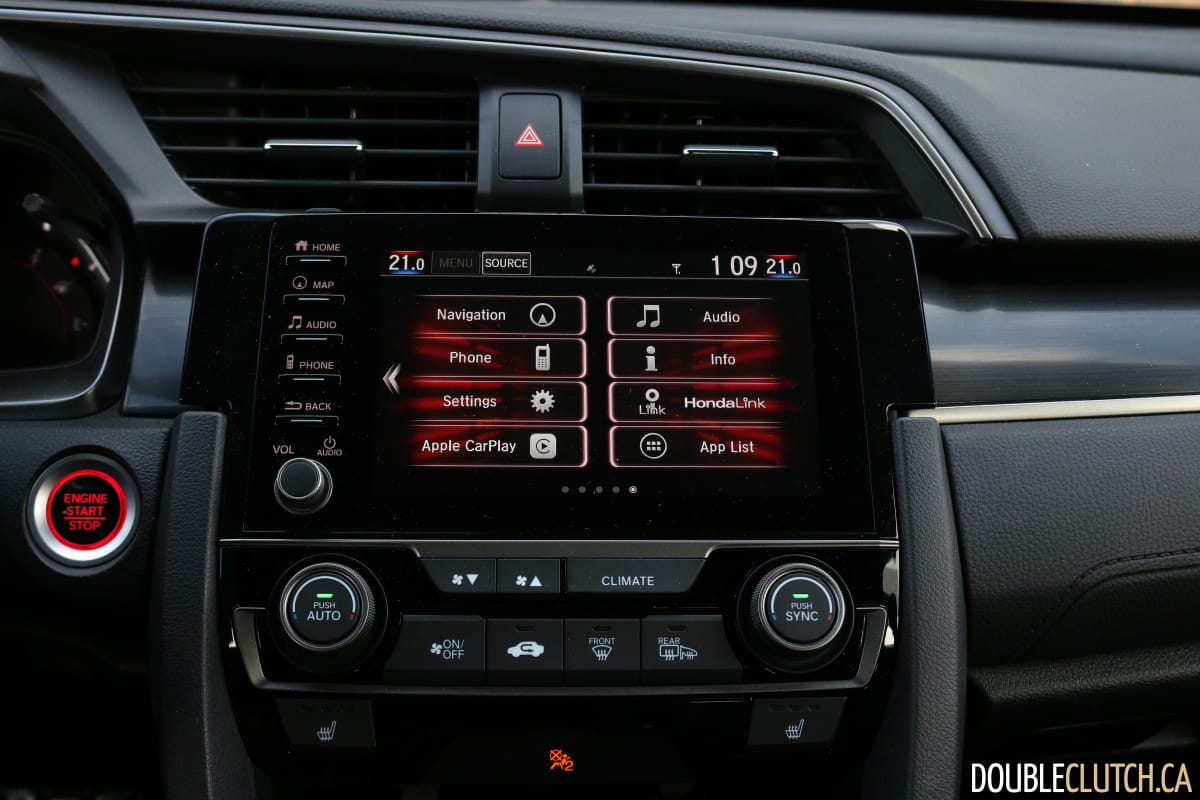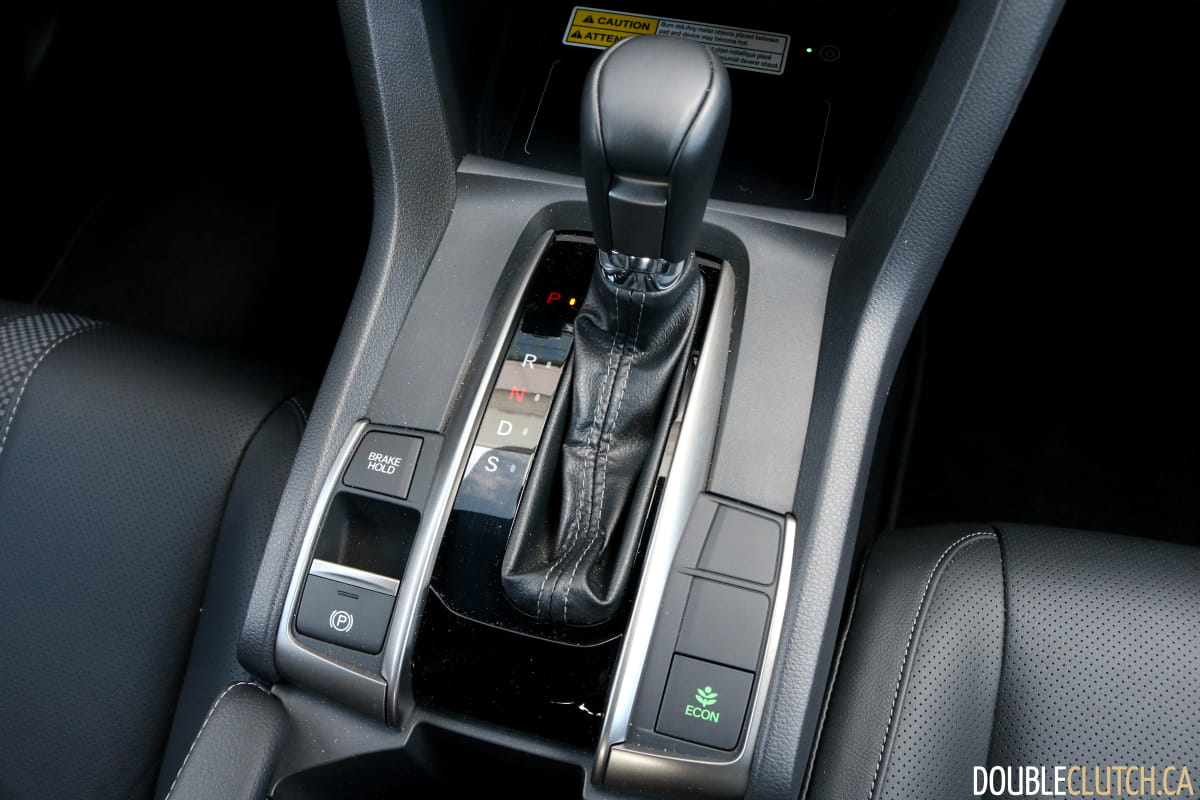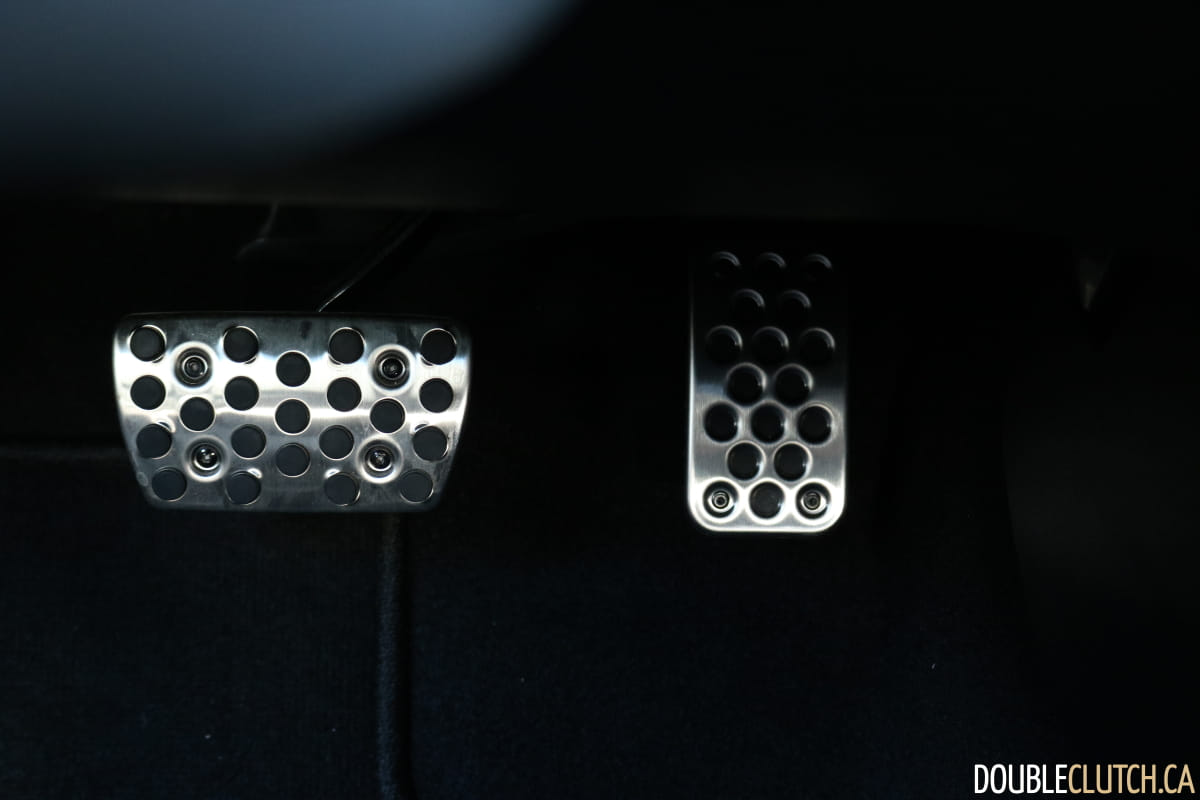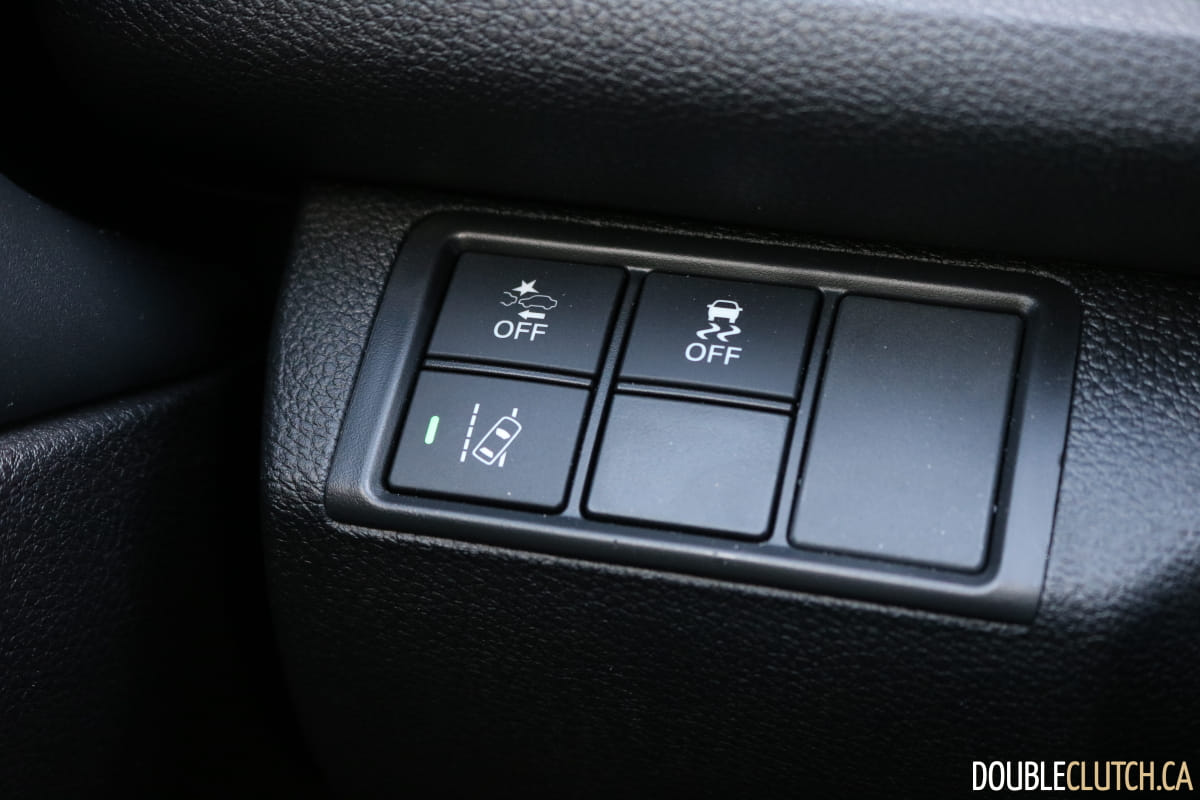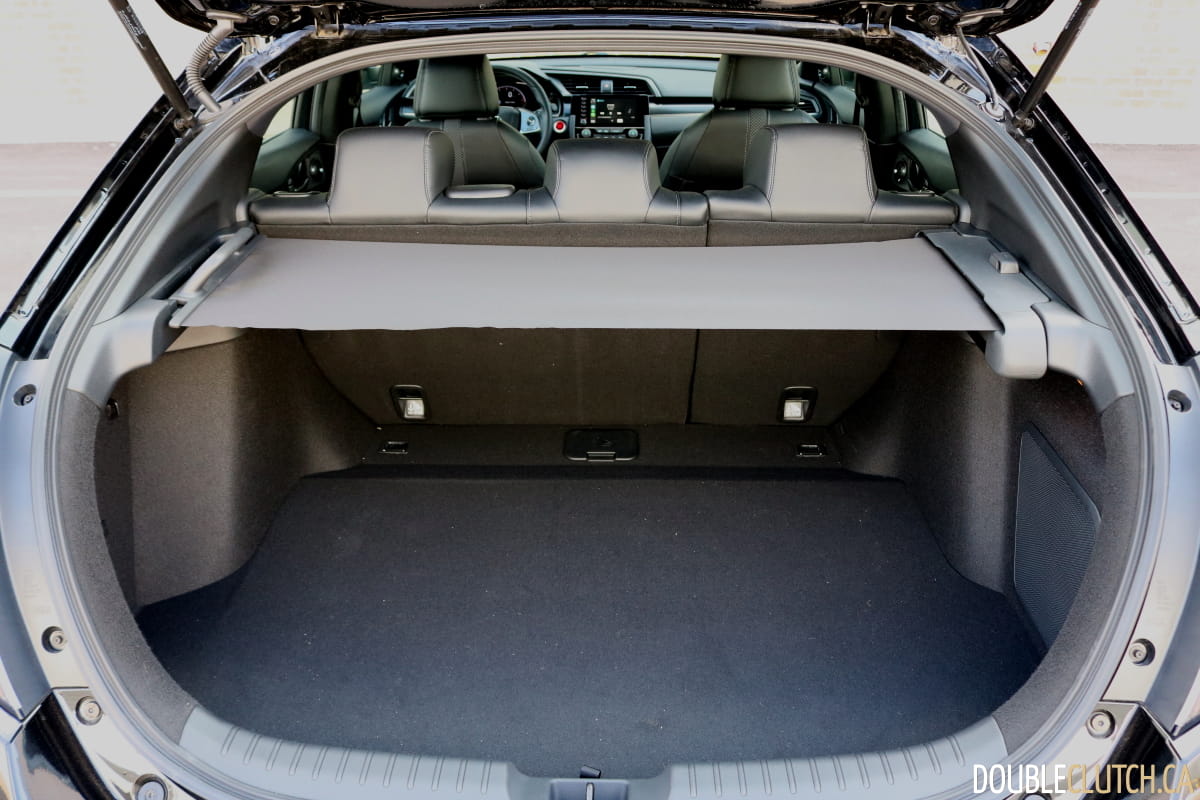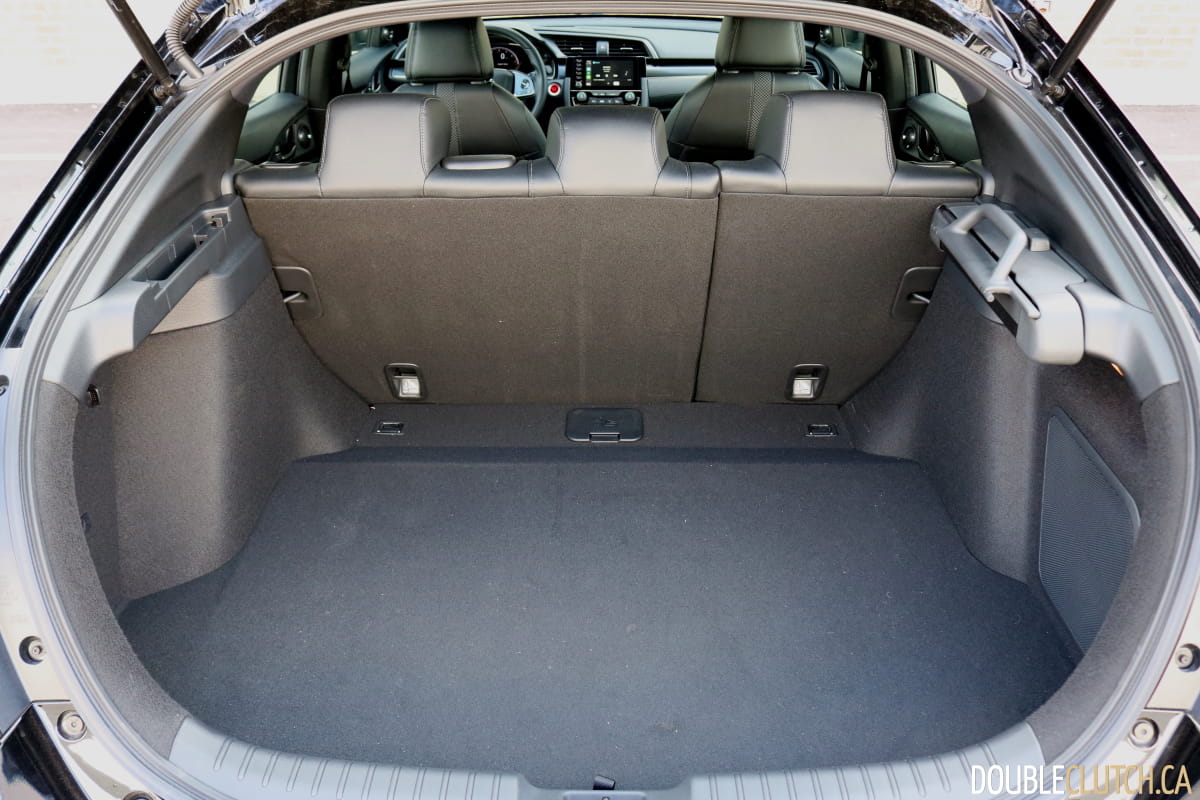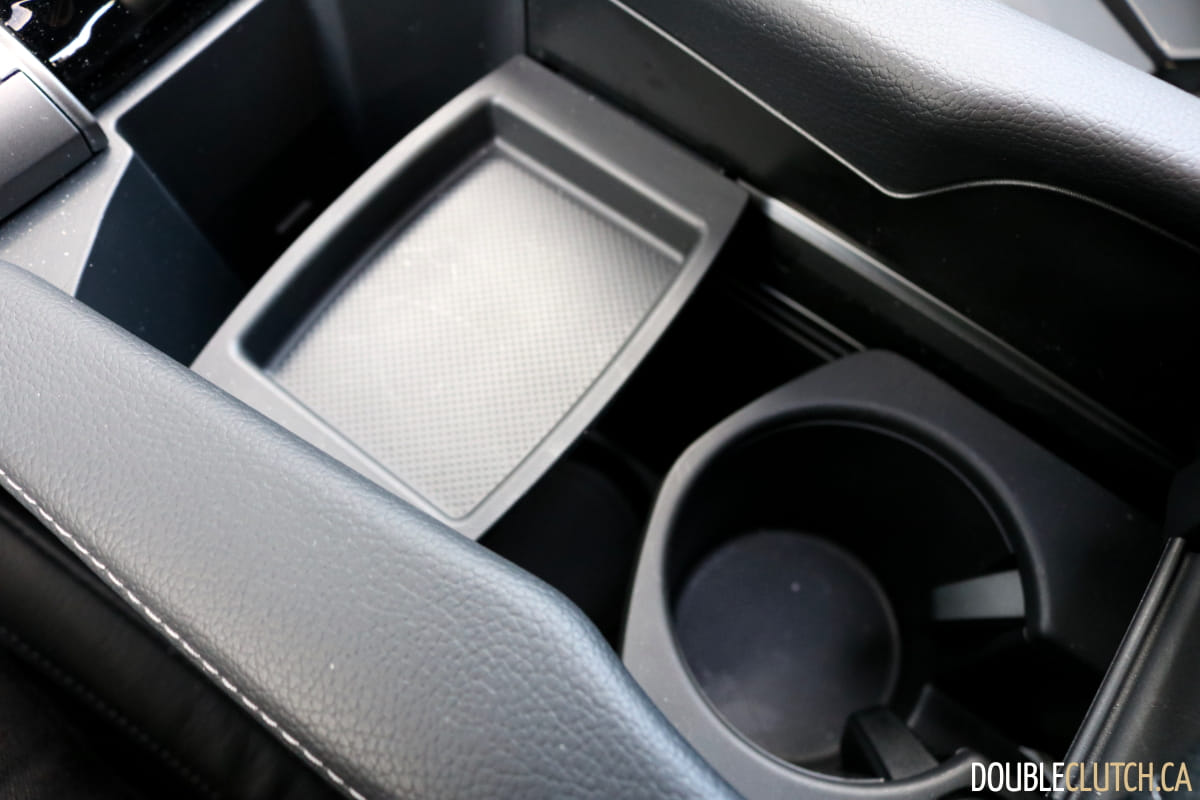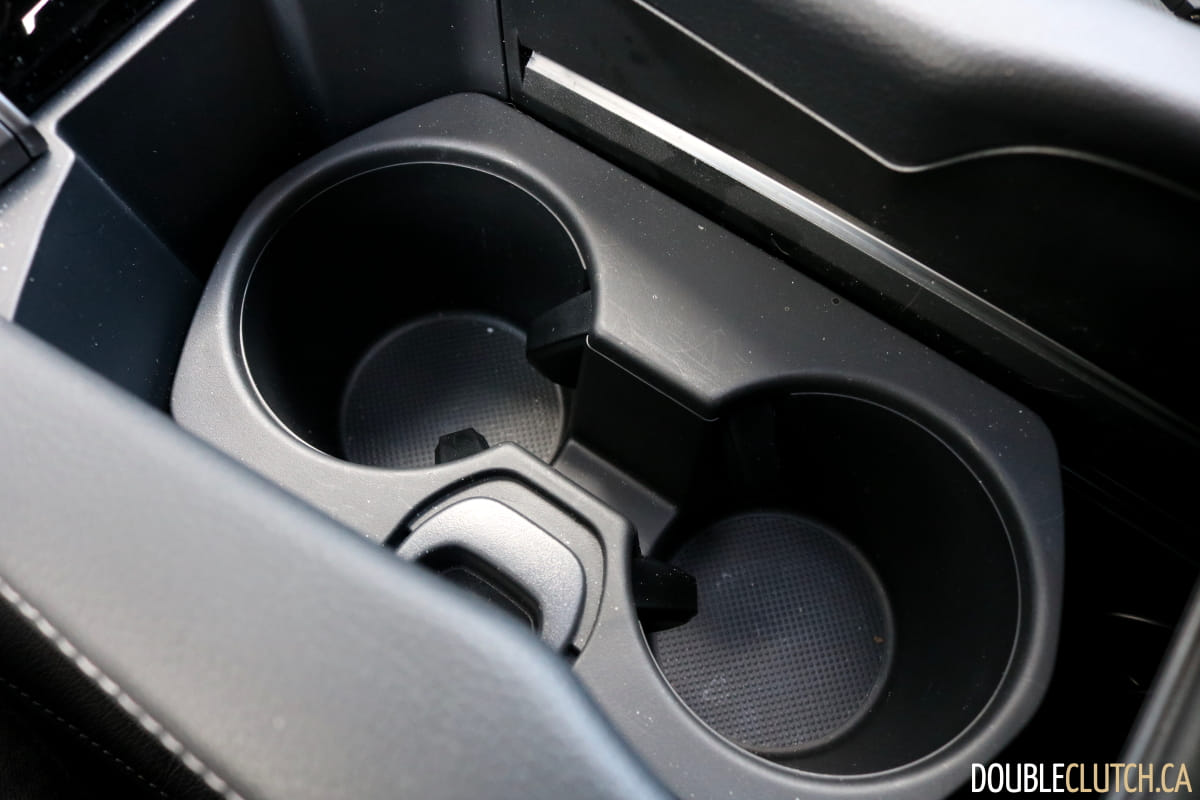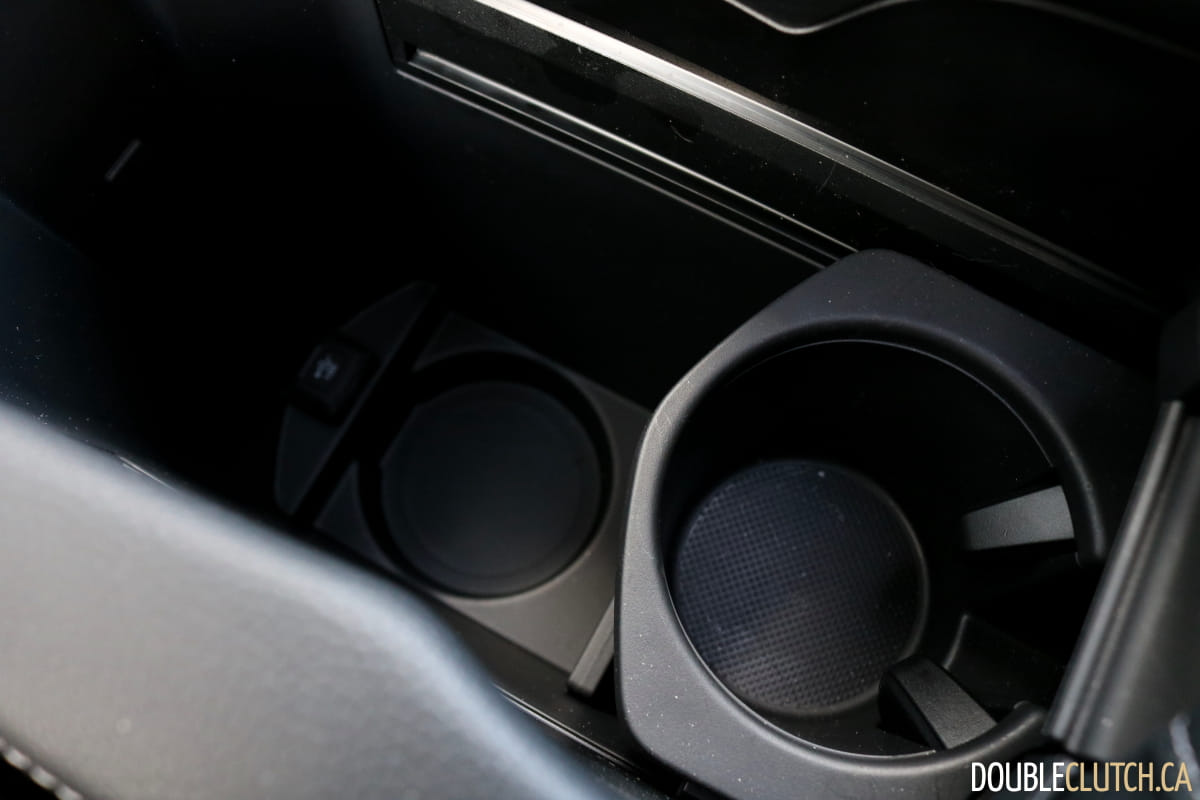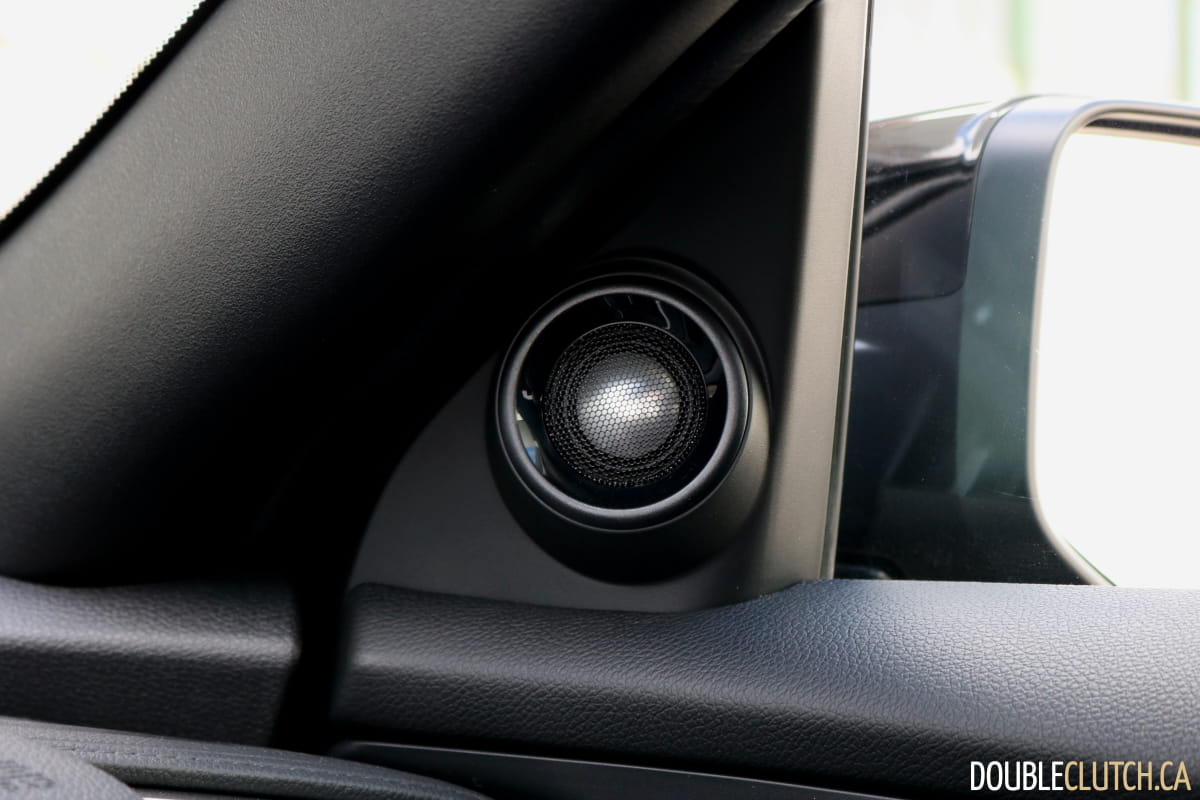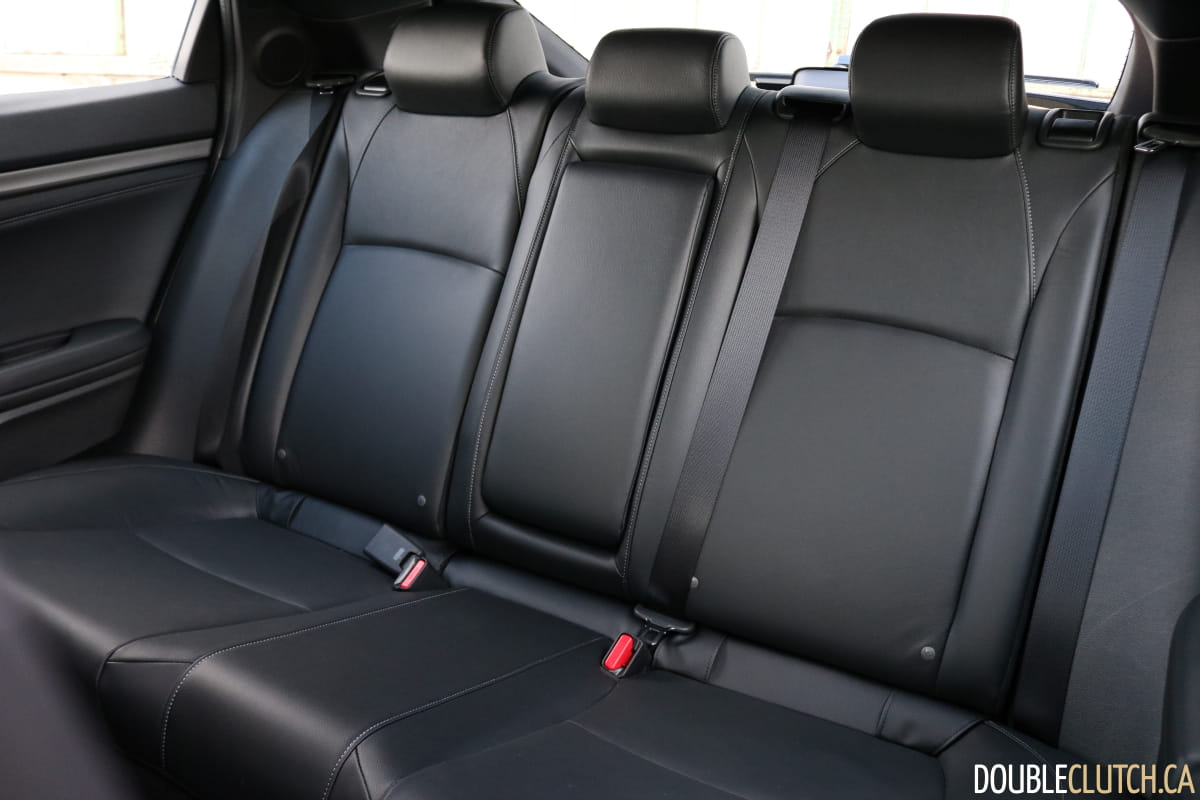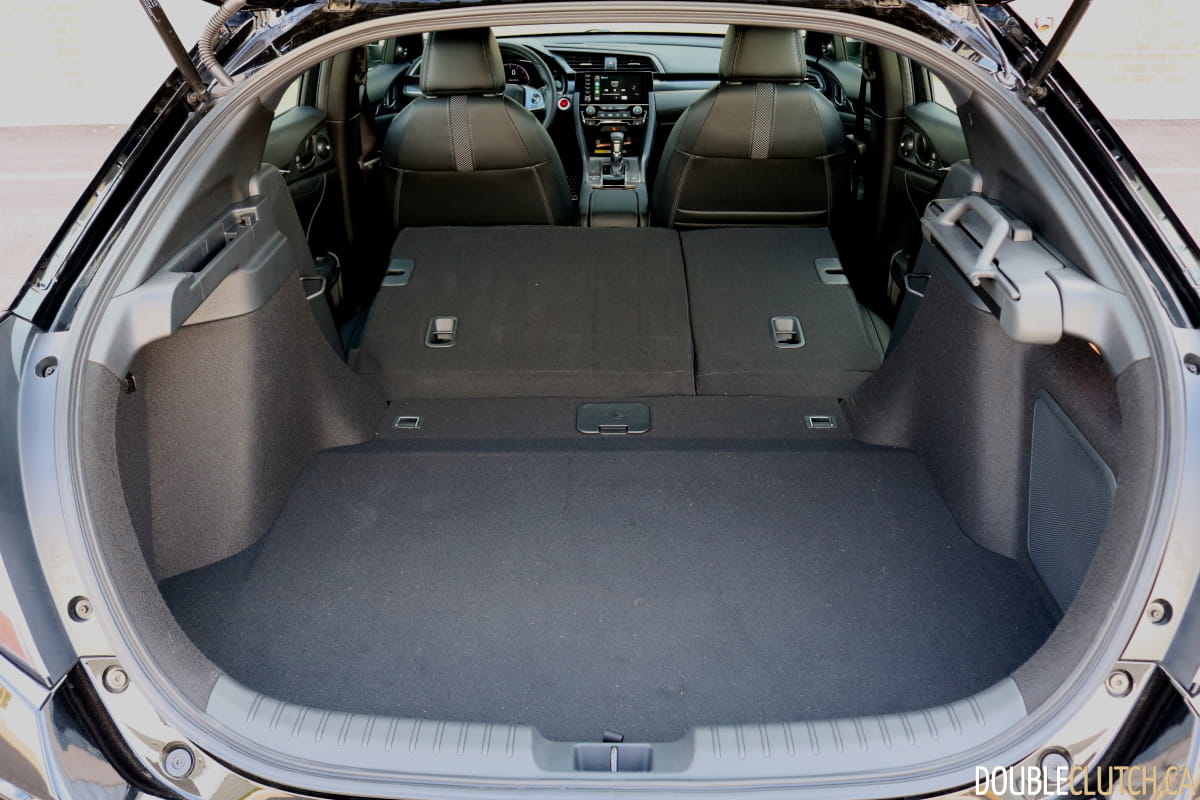The Honda Civic. It’s Canada’s favourite car, leading the sales race for an astonishing 22 years straight. It offers up a bewildering array of models, with the Sport hatch sounding like a sweet spot on paper offering Si-style looks, five-door practicality and more poke than other non-performance trim levels. But cars aren’t driven on paper, so how does the 2020 Honda Civic Hatchback Sport Touring stack up on the road?
There’s a lot going on with the exterior of the Civic Hatchback Sport Touring and it’s only somewhat hidden by our test car’s black paint. Two spoilers, two hatch windows, three levels of fins, centre-exit exhaust tips and large fake vents – and that’s just the back of the car. For a standard-tier car with 180 horsepower, it often comes across as a bit too much posturing. Even this writer who’s an unashamed fan of itasha liveries and hood-exit turbo dump pipes thinks the Sport Touring trim is slightly obnoxious for its purpose.
Appreciation of this much styling on one car is a matter of taste though, and it may appeal to those who want a truly sporty-looking car. What isn’t quite so subjective is the roofline which plunges down fastback-style and cuts into vertical cargo space. While great for aerodynamics, the weird cargo area shape and sheer amount of glass means it’s not a great place for dogs.
When it comes to interior design, Honda has nailed it with this Civic. The hip point is wonderfully low giving a real car-like sensation, the steering column has ample adjustment for reach and rake and the volume and climate controls are within easy reach of the driver. Furthermore, the centre console is at the perfect height and packs some neat design tricks that enhance comfort and practicality. The cupholders and a storage tray in the console are on tracks and slide for configurable storage. Furthermore, where most manufacturers would waste the space between the armrest hinges, Honda carves it out as a little tray for parking receipts.
Every new car seems to offer a bewildering array of electronics, and Honda has used them to mixed success in the Civic Hatchback. On the plus side, the digital instrument cluster is a nice touch on a compact car and offers a joyously juvenile boost gauge that’s unfortunately quite fake. From reasonably interesting to downright infuriating, let’s move on to the infotainment. While literally every other competitor offers crisp touchscreens with fast, responsive software, the Civic Hatchback offers an infotainment system that doesn’t offer any of that. Instead, drivers get to experience a low-resolution screen, heaps of lag and annoyingly obfuscated secondary functions.
Anyone could facetiously tell people it’s a re-skinned version of PalmOS and they would believe it. Another electronic demerit is the premium audio system, offering up an obnoxiously bright sound signature, mediocre staging and an absence of sub-bass. When both the outdated infotainment system and the disappointing premium audio system team up with Apple CarPlay, strange things happen. Audio volume often ends up artificially limited, with the only way to fix it being to enter an address in Waze and drive the wrong way. The resulting blip of guidance volume is enough to uncap the audio volume, but having to do it every time the car is started is enough to drive anyone around the bend.
For a vehicle with Sport in the trim name, the Civic Hatchback Sport Touring’s powertrain doesn’t show an overwhelming amount of moxie. The biggest culprit here is the continuously-variable transmission which only functions competently in one mode, sport. In drive it exhibits annoying levels of CVT rubber-banding and in manual mode the internals of the transmission magically transform into a vaguely-directable gelatinous mass. For those whose preferred prerogative is fun it’s best to skip the CVT and order up the standard six-speed manual transmission. Opting for three pedals isn’t just more satisfying, it’s $1,300 cheaper, 5 g/km of CO2 kinder to polar bears and torquier to the tune of 15 extra lb.-ft.
As for the engine, the 1.5-litre turbocharged, direct-injected four-cylinder engine delivers 180 horsepower and 177 lb-ft. of torque in a smooth, if somewhat uninspiring manner. Due to this engine only having variable cam timing and not variable cam lift, it doesn’t come alive at the top of the rev range in traditional Civic fashion.
Furthermore, Sport models come with a special tune that recommends premium fuel, a bit of a bummer considering this 1.5T makes less horsepower and torque than a mid-range Mazda3 Sport (reviewed here). Something else that’s sufficient and not much more is the fuel economy. Over a week of mixed driving we averaged 8.6L/100km. Not great, not terrible, but about eight tenths of a litre per hundred kilometres behind the government’s official combined number.
There is one brilliant thing about how the Civic drives and that’s how it turns corners. Honda did an excellent job tuning the dampers, springs and sway bars to ensure absolute composure and a reasonably eager front end. The result is astonishing street neutrality for an entry-level front-wheel-drive car and fairly high grip limits, particularly on corner transition. Furthermore, because the suspension geometry is so sound, acceleration squat and braking dive is well-controlled which really aids entry and mid-corner adjustability.
Add a dab of brakes before the apex or roll on the throttle a tad early and the chassis simply obliges. The bottom line? This Civic is a joy to fling around on-ramps, carve sweeping esses in and hunt down apexes on tight 90-degree right-handers. No wonder the Type R is the most dynamically-sorted front-drive car ever if these are the bones it’s working with.
Active driver assist systems are only as good as their calibration, and this particular Civic’s calibration wasn’t quite top-notch. The automatic emergency braking system was uppity, flashing the big orange “brake” warning in the gauge cluster while coasting to a stop in residential neighbourhoods and when accelerating through a lane-change. In addition, the lane-keep assist often flashed its warning light when using the three-blink lane change indicator function. It’s also worth noting that we haven’t seen this behaviour from other Civics in the past, but it’s a potential pitfall of driver assist systems.
To sum up, the Civic Sport Touring isn’t an Si-lite. It’s fine, economical transportation that’s outclassed given its age. The Toyota Corolla Hatchback (reviewed here) is more fun and efficient, the Mazda3 Sport is more stylish and upscale and the Volkswagen Golf is a Golf so it does everything quite well. Also unfortunate is the effect of Brexit on Civic Hatchback pricing. Unlike the sedan and coupe which are built in Alliston, Ontario the Civic Hatchback is built in Swindon, UK. As a result, this loaded test car stickers for $32,690.
That pricing is $3,755 more than a loaded Corolla hatchback or a loaded Volkswagen Golf and $1,040 more than a comparably-equipped Mazda3 Sport. Put against such stiff competition, the 2020 Honda Civic Hatchback Sport Touring doesn’t seem that appetizing. Grab the devil by his horns and step up to the Type R though, and the tables turn in a very dramatic fashion. But that’s a story for another time.









